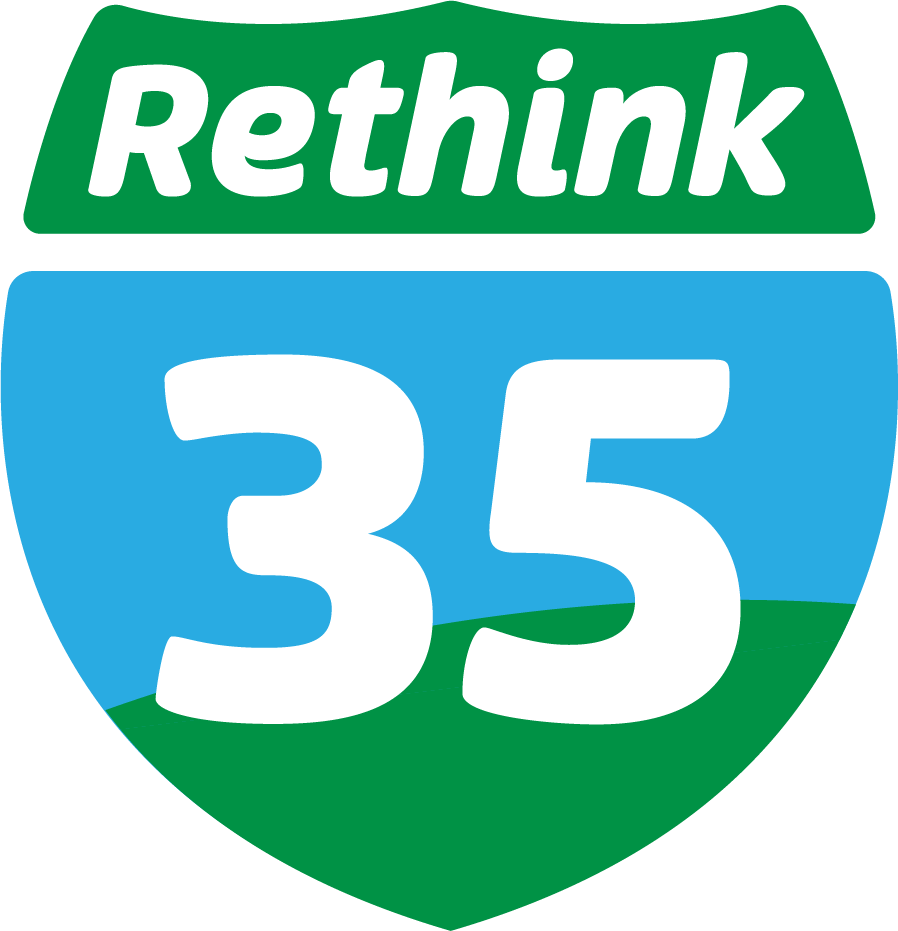Press release: The I-35 Cap and Stitch Project
Rethink35’s Statement on The I-35 Cap and Stitch Project
Austin, TX
As TxDOT plans to expand I-35 through the heart of Austin, we appreciate Council’s desire to do what it can to protect the community from some of the project’s worst impacts. While caps over I-35 may offer some benefits, we believe a broader set of strategies — including those outlined below — may more equitably and cost-effectively improve connectivity, encourage modeshift, and address environmental and health impacts. We are especially concerned given recent analysis from City staff indicating that money spent on caps will significantly compromise the City’s ability to fund other priorities. The recommendations below are premised on this analysis.
In general, Austin should make investments that encourage development along transit corridors, rather than highways. This is important for both public health and transportation modeshift. Living near highways can have serious health impacts, and development around highways tends to encourage car use. (As an illustrative example, instead of paying for capping sections of the highway, the City could purchase surface parking lots in transit rich areas and convert them into housing with affordable units.)
In addressing I-35’s harms, Austin should prioritize increasing connectivity across the highway and invest in transit, safety, and active transportation infrastructure throughout the city. Caps enhance — but do not provide additional — connections. Adding crossings would more impactfully and equitably improve connectivity, particularly where people walking and bicycling must travel multiple miles to cross I-35. Staff have identified six new crossings, totalling $50m, that would significantly improve connectivity.
Given the surrounding physical environment, turning caps into successful public spaces will be challenging. We therefore recommend that the City fund the structural supports for no more than one or two caps. The more focused the investment, the greater the likelihood of success for any given cap.
TxDOT’s proposed frontage roads pose a serious threat to the caps as vibrant public spaces. The City should press TxDOT to redesign the frontage roads along any caps as city streets with design speeds of 30 mph maximum, no more than two through lanes in each direction, trees and parking on both sides, and other design specifications, per UTC recommendations.
If the City proceeds, expected air pollution on or near caps should be studied. The City should then monitor pollution levels and take appropriate action. (The California Air Resource Board recommends that parks be placed at least 500 feet away from highways.)
Many Austin Council Members — along with Travis County Commissioners and state and federal representatives — have spoken out powerfully against expanding I-35 and the outdated, harmful practice of highway expansions. We’re deeply grateful for their leadership and shared commitment to a more just, livable future. We look forward to continuing this work together.
